
The Domestication Of Cats
Hi everyone, and welcome to Val Talk’s Pets. In this edition, I will dive into the history behind the domestication of cats. The domestication seems to have gone very well based […]
 play_arrow
play_arrowDog and Cat Trivia Challenge 1.3 Val Cairney

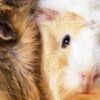 play_arrow
play_arrow10 Questions People Ask About Guinea Pigs Val Cairney

Hello and welcome to Val Talks Pets. This edition looks at the 10 questions people ask about Guinea Pigs. If you are thinking about getting one or two of these fur babies this episode is for you. However, If you only want an overview of Guinea Pigs, check out my episode on Small Animals. So, let’s get into the world of Guinea Pigs.
To begin with, the Guinea Pig. also known as Cavy, originated from the Andean region of South America. Ecuador, Peru, and Bolivia are known for indigenous Guinea Pigs. As AZ Animals points out, wild guinea pigs in these areas are rare and what is seen now is the domesticated guinea pig.
The GP is classified as a type of rodent. However, as AZ Animals says, Not everyone was on board with this classification. They state that “in the 1990’s some scientists argued that the Cavies are distinct enough, from an evolutionary perspective, to warrant classification in their separate order But, a full genetic analysis done since then supports the notion they belong in the order of Rodentia.”
Rodentia according to Wikipedia are “mammals of the order Rodentia, which are characterized by a single pair of continuously growing incisors in each of the upper and lower jaws.” I guess that means they are from the rodent family whether you like it or not. Interestingly, as AZ Animals states, “The very first members of the Caviidae family probably evolved around 26 to seven million years ago from marmot-sized rodents that came from North America, Europe and Asia.
Once they arrived in South America, however, this group became the cavy-like animals we know today. Most cavies are characterized by large heads, short but heavy bodies and barely visible tails.” The GP has gone through many trials and tribulations from being a food source to a sacrificial source to companionship to even helping diagnose illness
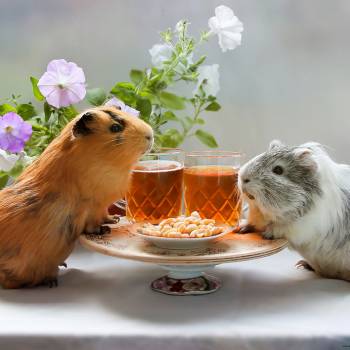
Well, believe it or not, as the little guys made their way across the Atlantic, it was Queen Elizabeth 1 who took a fancy to the Guinea Pig! This raised their status to that of trendy pets (a-z animals.com). Unfortunately, on a much more gloomy and upsetting side of the evaluation of the Guinea Pig, as AZ Animals points out, “By the 1800’s these animals were being put to use as experimental animals in laboratory tests to study nutrition, diseases and toxicology and health products. Their biological similarities to humans and the ease of working with them have made them ideal test subjects. They have helped in the discovery of vitamin C and the adrenaline hormone. They have also helped in the development of blood transfusions, antibiotics, asthma medicines and vaccines.”
Guinea Pigs live to be about 5 years of age on average depending on the source. However, a well-cared-for GP could easily make it 8 years. So, as I have said many times, “As parents, if you are not prepared to care for the animal you get for your child, do not get it.” If you obtain a Guinea Pig when the child is say 9 or 10 and the GP lives 7 or 8 years, that child could easily be heading for college or university leaving you with a senior Guinea Pig to care for. If you are not up to that task, rethink the idea.
If everyone is totally fine and on board, with the commitment to a GP, the Guinea Pig can be a great addition to the family as they are considered to be social animals that like contact with humans. As national zoo.si.education points out, “Guinea Pigs produce six main vocalizations: chutts, squeaks, whines, whistles, purrs and chirps. Each vocalization conveys a different meaning. Whistles and chirps covey the presence of food” for example.
I know quite a few Guinea Pig parents who say that as soon as they come into the room where they are housed, the GPs start chirping and whistling as they know food is coming and also because they are happy to see their human companion. They say that their Guinea Pigs love to be cuddled and brushed and played with, so are Guinea Pigs social? You bet they are!
As for the care of a Guinea Pig, it is not a daunting task but you will need to know a few things. Let’s look at what you will need.
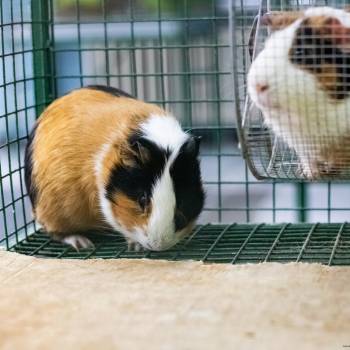
A Guinea Pig should have a substantial enough size to feel that it has space. At the same time, however, a GP will need out-of-cage time daily, to interact and socialize. Their cage should be at least 7.5 square feet minimum. (wikihowpet) However, I have found that most GP parents opt for the largest they can reasonably get into the room where they are housed. The cage should be placed where people often go in and out. A Guinea Pig left alone in a room is not a happy GP. The cage should also be somewhere away from drafts, not in direct sunlight, and be in a stable temperature with low humidity.
According to tinypettales.com “guinea pig bedding (should be) paper-based bedding, fleece bedding and hay bedding are safe to use. Avoid using cedar and pine shavings, cat litter and clay, corn cob bedding and recycled newspaper.” Cedar and pine or wood shavings that are high in aromatic oils pose a serious health risk to Guinea Pigs.
Now that the bedding is sorted, your guinea pig will need a food bowl and a water source, plus a space where he can hide away and toys for chewing. Most Guinea Pig parents use a ceramic or steel bowl for their GP’s pellets and food. Some use another bowl for water, but it tends to get knocked over and food gets in it so most opt for a hanging bottle.
Hanging water bottles come in plastic and glass. Glass is easier to keep clean but many find plastic bottles do just fine. Most water bottles will have a floating duck or disc inside to show you how much water has been drunk. There is a tip with water bottles, however. You will find they have a maximum fill line, to show you how much water to put in. This fill line has to be adhered to every time you fill the bottle. If you don’t fill it up to the fill line every time you refill it, your bottle will probably leak. Now, a lot of water bottles do leak, but try the “up-to-the-fill line trick” first, before returning your bottle.
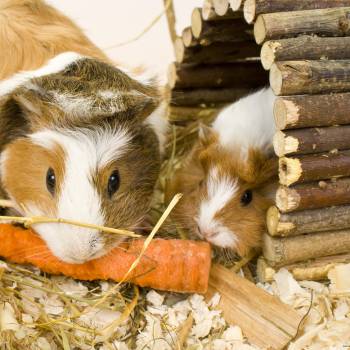
As for hideaway spaces, there are quite a few options in the small animal section of pet stores. These will include everything from an igloo to a set of wood branches that can be set up like a dome to little houses. These should be able to fit in the cage comfortably and be big enough for the GP to curl up inside.
As for chew toys, toys that are made of natural materials are the best. You will see in the small animal section lots of chew toys made from hay balls or wood in the form of blocks or sticks that they can chew on. Some people will put a used paper towel roll in for them to shred and chew on as well. I would make sure there is no glue on the roll first.
Guinea pigs can be litter-trained. According to Amazing Animal Tricks, guinea pigs contrary to many animals, often poop where they eat, so putting their hay and pellets near the litter tray works. A corner litter can work well filled with some shavings or paper-based bedding. Just like anything with animals, you will need to train them to go in the litter. Encouraging them to jump into the litter and even putting some poop in it can help you train your GP to use a litter box.
According to PDSA, the best diet for your Guinea Pig daily will consist of: “Hay/Grass, at least 85 – 90% of your guinea pig’s diet should be hay and grass. Fresh greens and veg: A teacup amount of fresh greens and veg per day, greens high in vitamin C are especially good. Pellets: Each of your guinea pigs should have one tablespoon of grass-based pellets per day. Water: Your guinea pig should always have access to clean, fresh drinking water.”
The hay choice should be timothy but fresh grass is a great option too. Just remember if you are giving fresh grass there should be no pesticides or dog pee. As for veg and greens, there is a lot so I think it best to just list the ones you shouldn’t feed. These include onions, garlic, chives, leeks or shallots. Avocados, beans, rhubarb, and unripened tomatoes and they should avoid plants like buttercups, daisies and evergreen plants.
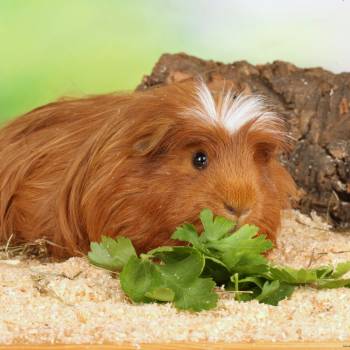
The big thing with Guinea Pigs is the Vitamin C. According to The Spruce Pets, “Vitamin C is very important to guinea pigs as they are unable to manufacture their own. Without enough Vitamin C in their diets guinea pigs can become very ill with scurvy. Most guinea pigs will need 10 -30 mg of vitamin C per day.” Most GP parents supplement with Vitamin C tablets and give it in a piece of fruit. Guinea pigs can have fruit but in small amounts as a treat, maybe to take their tablet.
As for male vs female guinea pigs. According to Supreme Petfoods, “males often have a bolder personality, making them easier to handle.” “Both have similar temperaments” however.
Different breeds may be more appealing to a prospective parent based on how they look. However, according to Andy by Anderson Hay, “the Merino Guinea Pig breed has a curly coat that is dense and soft. They are known for their calm and friendly personality making them great pets for those who want a furry companion that is easy to handle, and loves to be around people.” In my opinion, this sounds like the front-runner to me.
If you are thinking of having more than one guinea pig that isn’t a problem. Guinea Pigs are quite social. PDSA states, “Guinea pigs are commonly kept in single-sex groups, so a pair of males or a pair of females. Sibling or father/son, mother-daughter pairings often live well together. Pairings of male and female guinea pigs can also work well. Just make sure they are neutered to prevent any unwanted litters.”
Fixing a guinea pig is something you will want to do especially if you wish to have more than one and different genders. The only thing that will need to be researched is a veterinarian who is skilled and comfortable spaying or neutering a GP. Your dog or cat vet may say they do not do small animals, so ask if they can recommend a vet who they trust.
So there you have it. Guinea Pigs can be a great little companion that can be a wonderful addition to a family. They are happy little creatures that love to see their humans and are open to cuddles. Remember, children will need to be taught how to handle them safely so as not to hurt the little guy. Once the initial outlay has been made, a Guinea pig’s maintenance is not that costly. I hope these topics covered will help with the decision-making, but as always do your research. Make sure this is the pet for your family, because as I say, knowing is caring.

Tagged as: about guinea pigs, Guinea Pigs, guinea pig care, guinea pig, questions about guinea pigs.
Hi everyone, and welcome to Val Talk’s Pets, the forum for pet parents and enthusiasts alike. So, I have been working in the pet industry now for almost 10 years and, on a daily basis, I handle a lot of issues and questions arising from pet parents. I am not a veterinarian but I do have certifications in Canine, Feline, Small Animal, Fish and Herptile and Avian Health and Nutrition from the University of California, Davis Extension, the Vet College.

Val Cairney June 14, 2024
Hi everyone, and welcome to Val Talk’s Pets. In this edition, I will dive into the history behind the domestication of cats. The domestication seems to have gone very well based […]
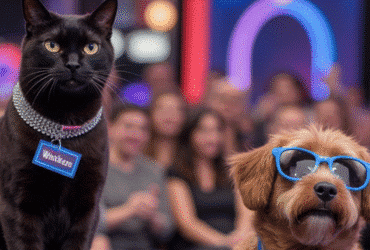
Val Cairney October 3, 2025

Val Cairney September 19, 2025
For the price of a coffee, or more if you are feeling generous, you can help keep this podcast going & growing. Please visit my ko-fi page to make a donation. Thanks!
all rights reserved - Val Talks Pets - 2024